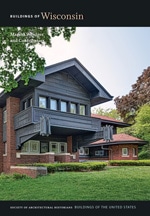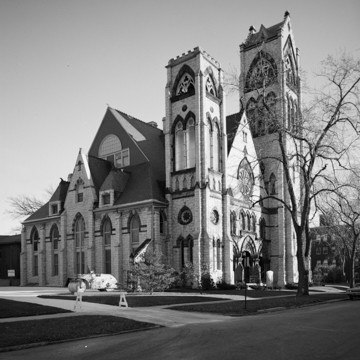Immanuel Presbyterian Church illustrates the exuberant High Victorian Gothic, popular for church design in the 1870s. The bold design, with two square corner towers of unequal height, is enhanced by the colorful stonework of white rock-faced limestone quarried in nearby Wauwatosa contrasting with dark red sandstone from Potsdam, New York. The interior was renovated after a serious fire in 1888. The most beautiful interior feature is a set of art glass windows crafted by Tiffany and Company of New York and installed at the turn of the twentieth century. Many of Milwaukee’s early English-speaking settlers attended this church. Their congregation was created in 1870 by merging congregations founded in 1837 and 1849. By the early 1880s, Immanuel was one of the city’s largest and wealthiest congregations.
You are here
Immanuel Presbyterian Church
If SAH Archipedia has been useful to you, please consider supporting it.
SAH Archipedia tells the story of the United States through its buildings, landscapes, and cities. This freely available resource empowers the public with authoritative knowledge that deepens their understanding and appreciation of the built environment. But the Society of Architectural Historians, which created SAH Archipedia with University of Virginia Press, needs your support to maintain the high-caliber research, writing, photography, cartography, editing, design, and programming that make SAH Archipedia a trusted online resource available to all who value the history of place, heritage tourism, and learning.











